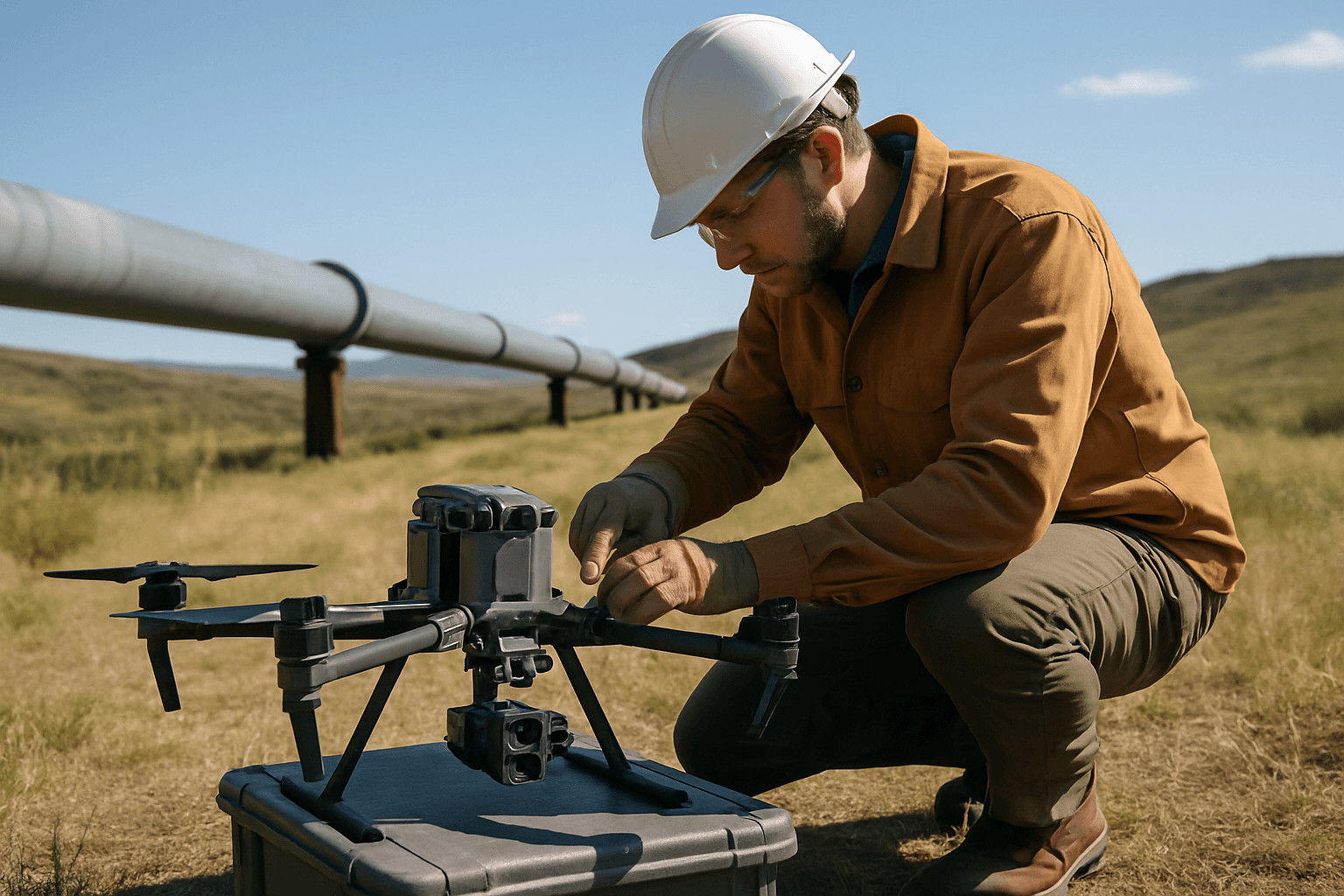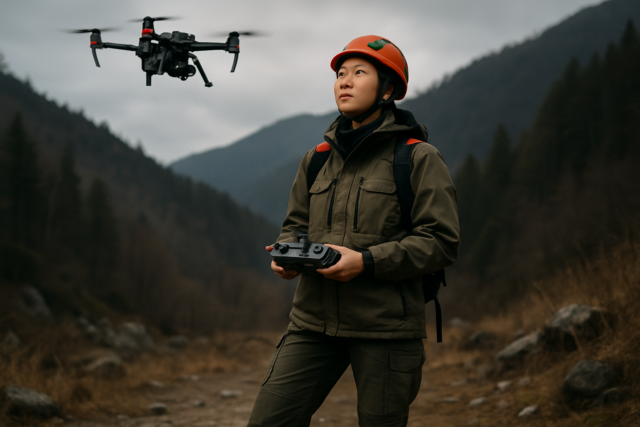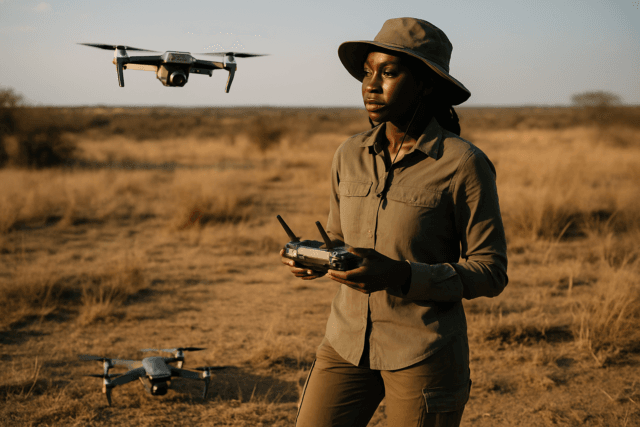The vast network of pipelines crisscrossing continents serves as the lifeblood of global energy distribution, delivering essential resources like natural gas, crude oil, and water. With millions of miles of pipelines worldwide, ensuring their integrity is paramount not only for operational efficiency but also for environmental protection and public safety. Pipeline leaks, even minor ones, can lead to significant economic losses, environmental contamination, and potential hazards. In response to these critical challenges, unmanned aerial vehicles (UAVs), commonly known as drones, are emerging as a transformative technology in pipeline leak monitoring.
The Critical Need for Advanced Pipeline Monitoring
Pipelines, often spanning thousands of kilometers across diverse and challenging terrains—including deserts, mountains, forests, and subsea environments—are susceptible to various threats. These threats range from corrosion and mechanical damage to natural disasters and unauthorized excavations.
Environmental and Economic Impacts of Leaks
Even a seemingly small leak can have catastrophic consequences. For instance, a mere 1% leak in a 20-inch pipeline could result in the loss of 450,000 barrels per year, leading to environmental damage across an area of up to 10 square kilometers. Such incidents devastate ecosystems, contaminate water sources, and incur immense cleanup costs and regulatory penalties. Moreover, pipeline operators face substantial economic losses from lost product, repair expenses, and potential legal liabilities. The Biden Administration, for example, has tightened regulations for over 400,000 miles of the U.S. pipeline system, instituting new anti-corrosion measures.
Limitations of Traditional Monitoring Methods
Historically, pipeline inspections have relied on labor-intensive and often hazardous methods. These include manual ground patrols, which are time-consuming and expose workers to dangerous terrains and potential leaks. Crewed aircraft, while offering a wider view, are expensive, less precise for detailed inspections, and can have a larger environmental footprint. Other traditional techniques like acoustic resonance, ultrasound scanning, and flow analysis are effective but can be limited in their scope and efficiency for extensive pipeline networks. These methods often miss early signs of damage and are not conducive to real-time, continuous monitoring across vast distances.
How Drones Are Transforming Pipeline Inspection
Drones are fundamentally changing pipeline inspection by offering a faster, safer, and more cost-effective approach to maintaining infrastructure integrity. Their ability to access remote and difficult-to-reach areas, combined with their capacity for high-resolution data capture and real-time insights, makes them an invaluable asset.
Enhanced Efficiency and Coverage
One of the primary advantages of drone pipeline inspection is the significant increase in speed and efficiency. Inspections that once took weeks with traditional methods can now be completed in a matter of days. Drones can swiftly cover extensive pipeline corridors, drastically cutting down inspection times and enabling more frequent monitoring. This is particularly beneficial for companies managing thousands of miles of pipelines, as they can pre-program autonomous missions and repeat automated flights as needed.
Improved Safety for Personnel
Drone-based inspections drastically reduce the need for human personnel to enter hazardous environments, such as high-pressure zones, toxic atmospheres, or challenging terrains. This minimizes exposure to risks like falls, chemical exposure, and difficult working conditions, thereby improving overall worker safety.
Real-time Data and Rapid Response
Modern inspection drones can provide real-time video streams and high-quality photos, allowing operators to detect potential issues immediately and respond quickly to potential pipeline failures. This real-time capability is crucial for minimizing environmental impact and reducing the risk of accidents by enabling early detection and rapid mitigation efforts.
Key Drone Technologies and Sensor Payloads
The effectiveness of drones in pipeline leak monitoring is largely due to the sophisticated sensor payloads they can carry. These sensors enable the detection of various anomalies that indicate potential leaks or structural weaknesses.
Visual and Thermal Imaging
High-resolution visible light (RGB) cameras are fundamental for visual inspections, capturing detailed imagery and videos of the pipeline structure to identify visible signs of damage, corrosion, or vegetation encroachment. Thermal imaging drones, equipped with specialized UAV thermal cameras, are crucial for detecting temperature anomalies that often signal leaks, structural weaknesses, or thinning insulation. Escaping gas or fluid typically alters the temperature around the point of release, which these cameras can pinpoint with remarkable accuracy.
Hyperspectral and Multispectral Cameras
Multispectral and hyperspectral sensors measure various wavelengths of light and infrared radiation. These are particularly useful for environmental monitoring, as they can assess plant health and detect changes in vegetation caused by underground leaks. Dying vegetation can be an early indicator of a subsurface pipeline leak that might not be visible otherwise.
Methane and Gas Detection Sensors
Specialized gas detection sensors are essential for identifying invisible gas emissions. Optical Gas Imaging (OGI) sensors, which use infrared technology, are highly effective for visualizing and detecting hydrocarbon gases like methane, propane, and butane. Laser-based sensors, such as Tunable Diode Laser Absorption Spectroscopy (TDLAS), measure gas concentrations by analyzing light absorption, providing highly accurate methane detection from distances of up to 300m. Some drones are equipped with “sniffer technology” that can identify gas concentration with high accuracy.
LiDAR for Topographical Analysis
Light Detection and Ranging (LiDAR) sensors use laser pulses to create precise 3D models of the ground surface and terrain. This technology is invaluable for detecting subtle changes in erosion or ground movement along the pipeline right-of-way, which could indicate potential geotechnical hazards or stress on the pipeline. LiDAR also aids in creating detailed maps and 3D models of pipeline routes for construction, operation, and maintenance.
Advantages of Drone-Based Leak Detection
The integration of drones into pipeline monitoring offers a suite of compelling advantages over traditional methods, extending beyond just efficiency and safety.
Precision and Accuracy
Drones equipped with advanced sensors and GPS technology, often with Real-Time Kinematic (RTK) systems for centimeter-level accuracy, can pinpoint the exact location, size, and depth of defects like cracks, dents, corrosion, or leaks. This precision allows for targeted repairs and preventative maintenance, reducing the likelihood of major failures.
Cost-Effectiveness
By reducing the need for large inspection crews, specialized equipment like scaffolding, and costly chartered aircraft, drones significantly lower operational costs. A single drone operator can manage inspections that previously required extensive manpower, making routine monitoring more economically viable. Furthermore, early detection of small defects through drone inspections can prevent major, expensive problems down the line, contributing to predictive maintenance strategies.
Accessibility in Difficult Terrains
Pipelines often traverse remote, rugged, or otherwise inaccessible areas, making manual inspections challenging and dangerous. Drones can easily navigate these challenging terrains, including steep slopes, dense vegetation, and even subsea environments with marine AUVs, providing comprehensive coverage where traditional methods fall short.
Data Analysis and Predictive Maintenance
Modern inspection drones, integrated with AI-powered analytics, can collect vast amounts of comprehensive data. This data can be processed to identify patterns, detect issues automatically, and provide insights for predictive maintenance. AI algorithms can help in identifying equipment defects through model detection, and machine learning can assist in clustering enhanced concentrations of gases to distinguish real leaks from natural sources. This shift from reactive repairs to proactive maintenance significantly enhances pipeline integrity management.
Challenges and Future Directions
Despite the numerous benefits, the widespread adoption of drone-based pipeline leak monitoring faces several challenges that are being actively addressed through technological advancements and regulatory developments.
Regulatory Hurdles and Airspace Integration
One significant challenge is navigating complex airspace regulations, particularly for Beyond Visual Line of Sight (BVLOS) operations, which are often required for monitoring long pipelines. Many jurisdictions have strict rules, and obtaining special waivers can be difficult. The Federal Aviation Administration (FAA) in the U.S., for instance, has specific regulations for commercial drone usage, including registration, pilot licensing, weight limits, and maintaining visual line of sight. Ongoing efforts are focused on developing procedures to exempt critical infrastructure monitoring from some of these restrictive requirements.
Data Management and Analysis Complexity
Drones can collect massive volumes of data, including high-resolution images, videos, and sensor readings. Handling, storing, and analyzing this data effectively requires robust backend systems, advanced analytics, and skilled data analysts. The complexity arises from the sheer quantity and variety of data, demanding sophisticated post-processing techniques and potentially machine learning algorithms to identify true anomalies and filter out false alarms from environmental factors.
Battery Life and Endurance Limitations
Current drone technology has limitations in battery life and flight endurance, especially for long-distance pipeline inspections. While some drones offer extended flight times, very long pipelines may necessitate multiple drones or frequent battery changes, adding to operational complexity. Advancements in battery technology and alternative power sources are ongoing areas of research.
AI, Machine Learning, and Swarm Technology
The future of drone-based pipeline monitoring is poised for further innovation. Artificial intelligence and machine learning will play an increasingly vital role in automating data analysis, identifying subtle anomalies, and even predicting potential failures before they occur. Autonomous drones equipped with advanced AI will be able to detect leaks or damage on their own and immediately inform response teams. Furthermore, the development of swarm technology, where multiple drones operate cooperatively to cover vast areas more efficiently, holds immense promise for comprehensive and continuous pipeline monitoring. These advancements will continue to enhance the precision, speed, and overall effectiveness of drones in safeguarding critical pipeline infrastructure and protecting the environment.





